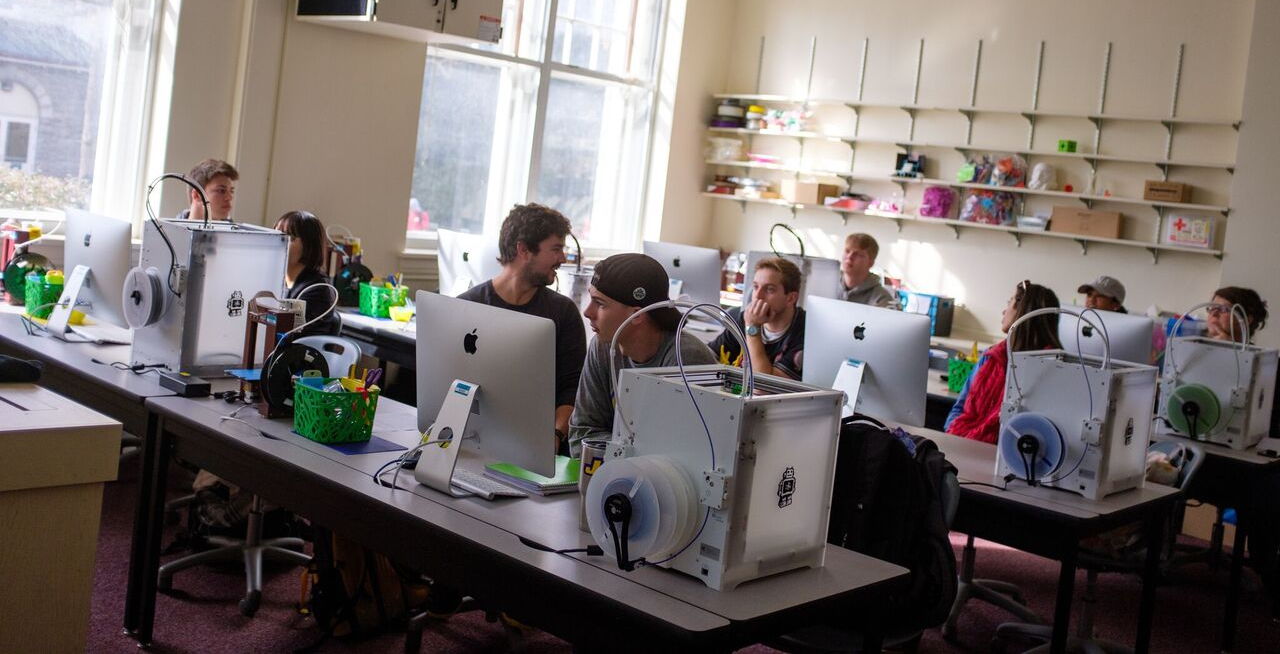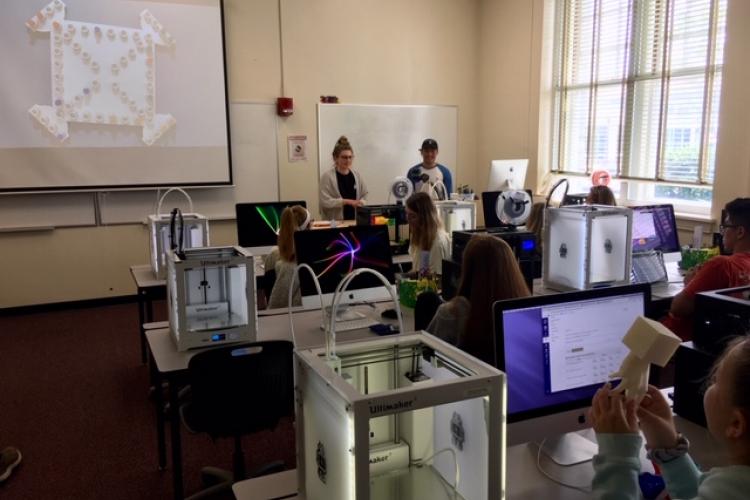Laura Taalman is a professor of mathematics at James Madison University, who works with 3D printing, singular algebraic geometry, knot theory, and games/puzzles such as Tchoukaillon, Sudoku, and Poker. She has worked for a variety of 3D printing companies such as MakerBot, Shapeways, and Ultimaker. She is the founder of JMU 3SPACE, the first general-education 3D-printing classroom in the country.

How did you first come to work with 3D printers?
I do mathematics research and work with knot theory quite a lot and I am a visual person so I like to make and hold the knot designs I work with. Some knots are complicated to make with simple string and so I turned to 3D printing to help me make more complicated designs. 3D printing software allows me to create and print knots that I would have not been able to make otherwise. Some of my designs can be seen on my website.
What do you love most about working with 3D printers?
I love the design aspect of working with 3D printing. Designing is an art form when it comes to 3D printing. 3D printing designs can have many different capabilities and possibilities to help you create what you want. I also love being able to see and getting to hold my designs once they are completed.
What is the value of getting into 3D printing?
3D printing is a great skill to learn for a variety of positions. For example, getting to know a programming language like Python can be a marketable skill and make you more desirable to employers. 3D printing is the same. 3D printing can be used in many industries and so learning the software is a great skill to have. To learn more about 3D printing software and getting started, visit mathgrrl.com/hacktastic/.
What does the future of 3D printing look like for mathematics and other disciplines?
The future of 3D printing can hold many possibilities. We are starting to see 3D printed houses which can be affordable and quick to make. Human body parts have also been made with 3D printers including bionic eyes, bionic ears, antibacterial teeth, elastic bone, and most recently a 3D printed heart was made from human patient's cells!
If you want a career in 3D printing, the top degrees include mechanical, industrial, or software engineering degrees since 3D printing companies want engineers who can understand, maintain, and operate the equipment. Computer animation is also a popular degree to break into the 3D printing world since an understanding of the software used in translating visual concepts into tangible objects is vital. A degree in biomedical technology can help you work with 3D printing in developing new medical solutions through 3D technology. For more on how to get a job in 3D printing and jobs search, click here.
Photo Credit: James Madison University

